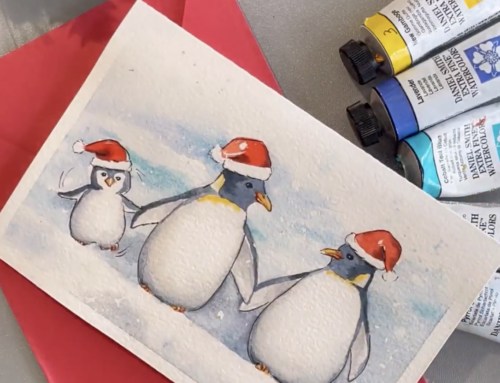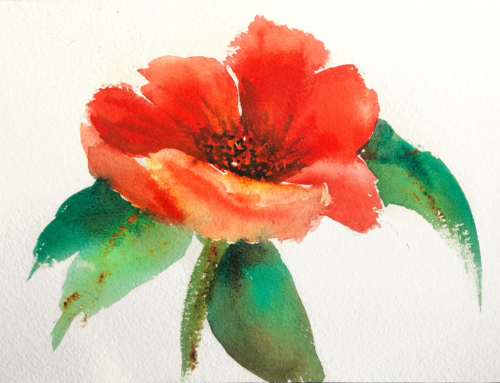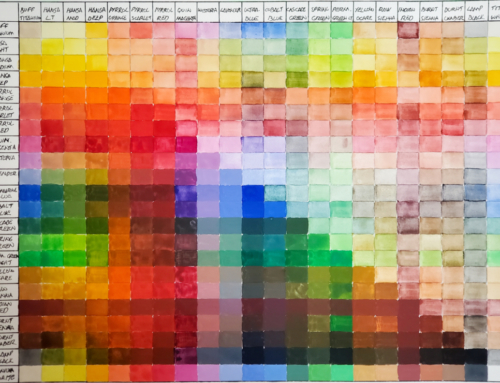Share:
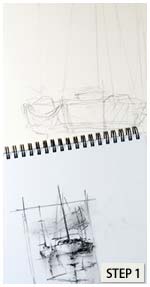
Anders Andersson tells you step-by-step how to paint with watercolors in this brief tutorial.
Step 1 – The Sketch
I often do a complex sketch of my subject. The sketch will help me determine the composition, values and proportions of my subject. Then I transfer my sketch onto the watercolor paper using a pencil, to make a simple line drawing.
Anders’ Colors:
– Neutral Tint
– Burnt Sienna
– Anthraquinoid Red
– Indian Yellow
– Cobalt Blue
– French Ultramarine
– Cadmium Orange Hue
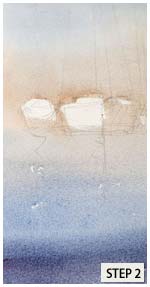
Step 2 – First Wash
My first layer is a wash with a weak blend of pigment and a lot of water. As the wash travels downward, I add in different colors. For this painting, I began with DANIEL SMITH Cobalt Blue and add some other colors when I get closer to the boats. I work very wet so that the colors in the wash blend smoothly. The sketch helps me to know where to save some white areas for the boats.
Note: The painting is on a board with an angle of about 30 degrees, this helps the colors in my wash to mix and mingle on the paper giving a smooth transition of color.
Next I put in darker pigment, a stronger wash of Cobalt Blue in the mix for the water. Keeping the stronger pigment towards the bottom of my paper. Still working very wet.
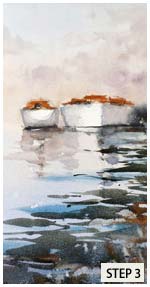
Step 3 – Second Wash
I allow the painting to dry a bit, then add in my second wash. This second mix is thicker with more pigment than the first one.
With this mix, I put in reflections, shadows and paint the suggestion of clouds behind the boats. I also connect forms and increase contrast to give the boats more dimension.
The waves are painted with DANIEL SMITH Neutral Tint and Ultramarine, I use a loose horizontal brush movement when painting to suggest waves in the water. I make the waves bigger in the front (at the bottom of my paper) and smaller far away.
Step 4 – Finish up
Time to put in details! Here I use a rigger with an extremely pointed tip to draw the masts, and the rope rigging for the sails. When you paint the masts and the lines for the rigging, you do it with your whole arm and in one movement so that the lines have good flow. Practice your arm movement a couple of times before committing your brush to the paper so that the gesture is true. Keep adding in the details for the boats.




